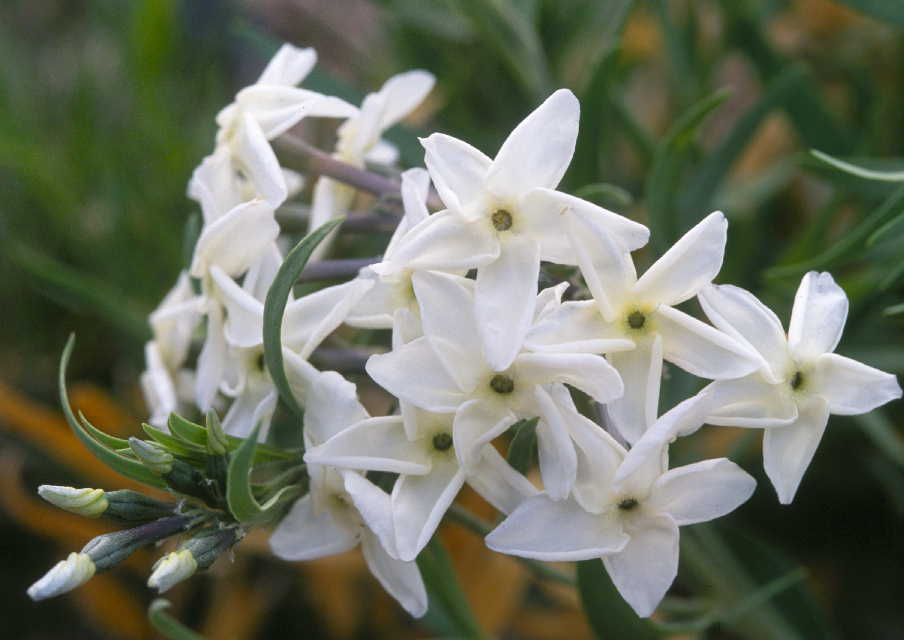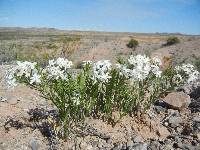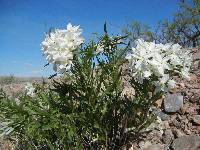
|
|
|
|
Family: Apocynaceae
San Antonio Bluestar
|
NM Rare Plant Website (Heil & Herring 1999), McLaughlin 1985 Duration: Perennial Nativity: Native Lifeform: Forb/Herb General: Many-stemmed herbaceous perennial from a woody caudex; stems erect, sparsely pubescent, 30-50 cm long; herbage exuding a milky sap when broken. Leaves: Cauline, glabrous, alternate; lower leaves elliptic to lanceolate, 6-10 mm wide, upper leaves reduced, linear, 1 mm broad. Flowers: Terminal clusters of white to cream colored, salverform flowers; calyx 5-lobed, the lobes awl-shaped, glabrous or sparsely ciliate, 5-6 mm long, dark purplle; corolla tube 16-20 mm long, broadest at the apex, moderately constricted at the orifice; corolla lobes ovate-acute, 7-10 mm long, cream-white. Fruits: Fruit a pair of narrow follicles 3-6 cm long; seeds cylindrical, corky, 8-10 mm long. Ecology: Limy conglomerate ridges and associated outwash slopes in Chihuahuan desert scrub; 5,000-6,000 ft (1524-1829 m); flowers April and May. Distribution: Endemic to Socorro County, NM Notes: Amsonias ride the line between herb and subshrub. They are perennials that appear dense and shrubby but are not really woody. The leaves are long, narrow, and alternate all along the stems, which are topped with clusters of showy funnel-shaped white flowers. If you break a leaf or stem, a milky sap will exude. Amsonias tend to be uncommon on the landscape, and there are a handful of species in the Southwest that are considered to be rare, generally with subtle differences between them. This species is similar to A. longiflora of southern New Mexico and A. grandiflora of southern Arizona. It is distinguished from these two species in having glabrous, lanceolate leaves and pubescent stems. It also has broader leaves and corolla lobes than A. longiflora. Ethnobotany: No known uses although several species of Amsonia are ornamentals and others contain alkoloids. Etymology: Amsonia is named for Charles Amson, American physician who lived in Virginia in 1760 and was a friend of prominent physician, botanist and plant collector John Clayton. The specific epithet fugatei honors naturalist Paul Fugate who disappeared from the Chiricahua National Monument in southeastern Arizona in 1980 and is presumed dead. Editor: AHazelton 2015 |
This project was made possible in part by the Institute of Museum and Library Services [MG-70-19-0057-19].
Powered by Symbiota





